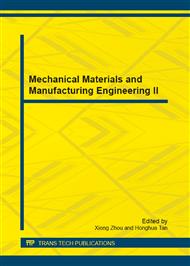p.355
p.361
p.365
p.370
p.379
p.387
p.391
p.395
p.402
FE Design Tool for Laminated Composite Plates
Abstract:
Considering the non-linearity, complexity and anisotropy of constitutive equations in composite materials, numerical methods are essential to evaluate the behaviour of this material. The finite element method (FEM) is a powerful computational technique for the solution of differential and integral equations that arise in various fields of engineering and applied science such as composite materials. Here, an FEM tool is designed to analyse non-linearity in the behaviour of composites caused by the effect of transverse shear and twist in laminated composite plates. The tool is established by using FEM for composites in ABAQUS combined with programming in Python to run the tests for all possible fibre orientations in laminated composite plates. It is shown that the tool has the ability to design laminated composite plates by considering the effect of transverse shear and the tool’s output provides results for all different fibre orientations. It is demonstrated that there is good agreement between numerical results obtained from this tool and experimental results. The advantages of the tool give designers the opportunity to use this tool for wide range of products.
Info:
Periodical:
Pages:
379-383
Citation:
Online since:
December 2012
Keywords:
Price:
Сopyright:
© 2013 Trans Tech Publications Ltd. All Rights Reserved
Share:
Citation:


